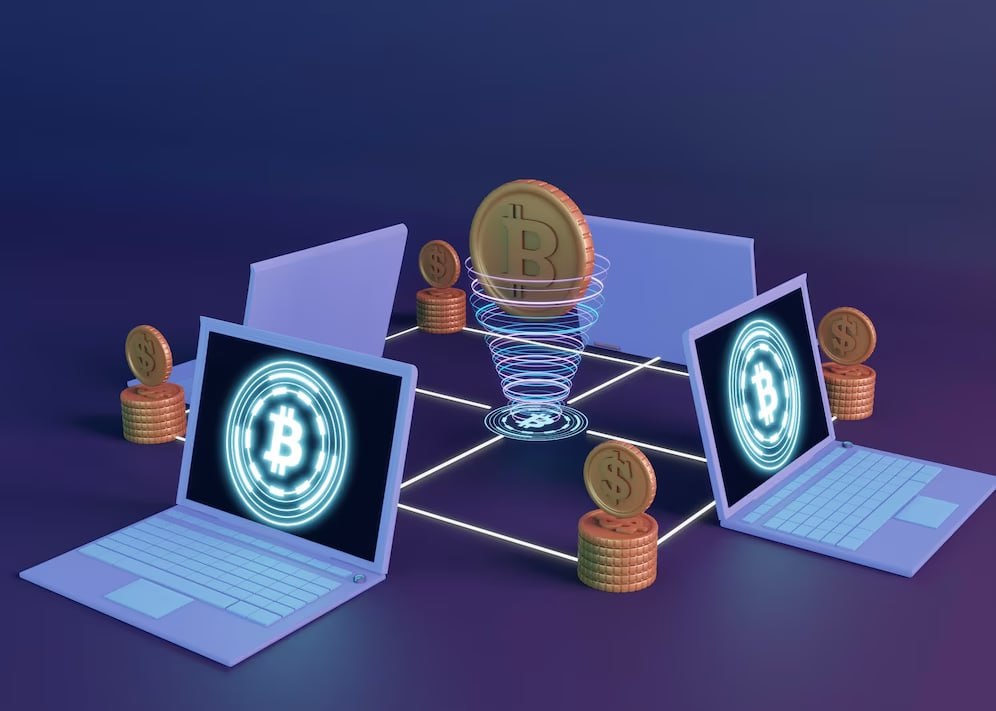The concept of a decentralized exchange is not new, but it has gained significant attention due to the rise of blockchain technology and cryptocurrencies in recent years. Often referred to as DEXs, they offer a platform for users to trade cryptocurrencies directly without the need for an intermediary or central authority. In contrast to traditional financial systems, these exchanges do not hold users' funds, positions, or information and only facilitate peer-to-peer trading. This system eliminates the risk of centralization and gives users greater control over their assets. It is essential to understand DEXs, their benefits, and their limitations. This article will explore the revolutionary infrastructure changing how we conduct financial transactions. It's a world where we control our assets, intermediaries are obsolete, and we can transact freely and securely.
Understanding the DEX Concept
A Decentralized Exchange is a blockchain-based platform that enables users to trade crypto directly with each other. Unlike traditional centralized exchanges, where an intermediary handles the transaction, in a DEX, the entire process is automated and executed by smart contracts. The primary characteristic that sets such an exchange apart from a traditional one is the absence of a third party or middleman. Simply put, a DEX operates on an automated system that connects buyers and sellers directly, executing transactions on their behalf without needing an intermediary. Decentralized exchanges offer many benefits compared to their centralized counterparts. These benefits relate to privacy, security, accessibility, and control over funds. However, like any other technology, they also come with their own set of challenges and risks.
Benefits of Using a Decentralized Exchange
DEXs represent a significant shift in the world of digital asset trading. Unlike the traditional centralized exchanges, DEXs operate without a central authority, offering enhanced privacy, improved security, and unrestricted access. Users are granted complete control of their digital assets, which brings about a range of benefits that are transforming the landscape of cryptocurrency trading.
Enhanced Privacy:
One of the key benefits is the privacy a DEX offers. Unlike centralized exchanges, which require users to disclose personal information such as names, addresses, and bank account details, DEXs don't require any. Transactions are executed directly between parties without intermediaries, significantly reducing the risk of personal data breaches. This level of privacy is a significant advantage for users who value their anonymity and a critical feature that boosts users' confidence in the system. It should be noted, though, that there are many other ways to ensure anonymity for crypto users that do not require using a DEX.
Improved Security:
Security is another significant benefit of DEXs. Centralized exchanges, with their vast repositories of users' personal and financial information, have proven to be attractive targets for hackers. DEXs, on the other hand, do not hold user funds or data, making them less susceptible to large-scale hacks. By allowing users to retain control of their funds, DEXs eliminate the risk of losing assets due to exchange hacks, enhancing the overall security of digital asset trading.
Unrestricted Access:
Decentralized exchanges offer unrestricted access to users across the globe, regardless of their location. They operate on blockchain technology, which is borderless and decentralized by design. This fact means that anyone, anywhere, can access and participate in the market at any time. This situation contrasts centralized exchanges, which often restrict users based on location or other factors. The unrestricted access provided by DEXs democratizes the trading of digital assets, allowing for greater participation and diversity in the market. DEXs offer a viable and increasingly popular alternative to traditional centralized exchanges. With enhanced privacy, improved security, and unrestricted access, DEXs are set to redefine the world of digital asset trading.

How Does a DEX Work?
At PlasBit, we highlight the importance of crypto education. Understanding the parts played by blockchain technology and smart contracts is crucial to understanding how a DEX works. Blockchain is the technology that fundamentally underpins and powers crypto. A distributed ledger records all transactions across a computer network, making altering or tampering with the data virtually impossible. In a decentralized exchange, when a user wants to trade a cryptocurrency, they create an order and sign it with their private key. This order is then broadcast to the network. Smart contracts, self-executing contracts with agreement terms directly written into code, handle the order matching and execution part. Once a match is found, the smart contract executes the trade, transferring the assets directly from one user's crypto wallet to another. The entire process is automated, secure, and transparent, eliminating the need for a third party.
The Technology Behind Decentralized Exchanges
The technology behind decentralized exchanges combines blockchain technology, cryptography, and smart contracts. Blockchain technology guarantees that all transactions are transparent and immutable. Cryptography secures the transactions, ensuring they cannot be altered or tampered with. Smart contracts automate the entire process, from order matching to execution. One of the essential technologies that make DEXs possible is the Ethereum blockchain. Ethereum introduced the concept of smart contracts, allowing for creating dApps (decentralized applications) on its platform. Many decentralized exchanges are built on the Ethereum blockchain, using its smart contracts to automate the trading process. In addition to Ethereum, blockchain platforms like Binance Smart Chain, Polkadot, and Cardano are also used to build decentralized exchanges. These platforms offer scalability, interoperability, and security features, making them suitable for developing sophisticated DEXs.
The Different Types of DEX
Decentralized exchanges (DEXs) have emerged as a popular alternative to traditional centralized exchanges due to their enhanced security, privacy, and control over funds. Here are the main types of DEXs:
Automated Market Makers (AMMs):
These DEXs replace order book-based trading with a liquidity pool model, where users can trade directly with the pool at a price determined by a mathematical formula.
Order Book Based DEXs:
These exchanges utilize a traditional order book model similar to centralized exchanges. Traders can set specific buy or sell orders and price points, offering flexibility but potentially lower liquidity.
Cross-Chain DEXs:
These exchanges support trading between different blockchains, not just within one ecosystem. They use various mechanisms, like wrapped assets or atomic swaps, to enable cross-chain trades.
Liquidity Aggregator DEXs:
These DEXs aggregate liquidity from various sources to provide the best trading conditions. They route trades through the most efficient path, securing the best price for traders.
Margin Trading DEXs:
These DEXs allow users to trade with leverage, offering the potential for higher profits but also greater risk.
Synthetic Asset DEXs:
These DEXs allow users to trade synthetic versions of real-world assets, like stocks or gold. Each type of DEX comes with its own set of advantages, challenges, and trade-offs, including varying levels of decentralization, liquidity, speed, and ease of use. We recommend at PlasBit that you thoroughly research and understand a DEX before using it so as not to risk funds unnecessarily.
Comparing Centralized and Decentralized Exchanges
While decentralized and centralized exchanges serve the same purpose of enabling cryptocurrency trading, they differ significantly in their operational models. Centralized exchanges operate much like traditional banks or stock exchanges. They act as intermediaries, holding users' funds and executing trades on their behalf. On the other hand, DEXs eliminate the need for an intermediary. They use blockchain technology and smart contracts to connect traders directly, executing trades on their behalf. This system offers a variety of benefits, such as increased privacy, improved security, and unrestricted access. However, it also presents some challenges and risks. The rise of DEXs in the crypto world is significantly tied to the shortcomings of Centralized Exchanges. The collapse of FTX and other crypto-related catastrophes in 2022 exposed the vulnerabilities of CEXs, fueling a shift towards DEXs. These incidents led many crypto enthusiasts to question the fundamental structure of CEXs. Our view is that both exchange types have merits and demerits. Centralized exchanges offer speed, convenience, and user-friendly interfaces, but at the cost of potential security risks. Decentralized exchanges offer enhanced privacy and control but can be technically challenging for new users. The decision between the two often comes down to an individual's trading needs and risk tolerance.
Navigating the Challenges and Risks of DEXs
DEXs have revolutionized the world of digital finance. Yet, while this innovation offers great potential, it presents a unique array of challenges and risks, including unfriendly user interfaces, liquidity issues, and a lack of support systems when things go awry. Here, we delve into the intricacies of these challenges.
Unfriendly user interfaces:
DEXs are built on blockchain technology and are renowned for their robust security measures and decentralized nature. However, this technology can be excessively complex for an average user. The interfaces of DEXs are often less user-friendly than their centralized counterparts, leading to a steep learning curve and potentially deterring less technical users. The intimidating nature of these interfaces can create a barrier between DEXs and a broader user base, thus inhibiting the mass adoption of decentralized exchanges. DEXs often lack the straightforward functionality of the crypto tools we provide at PlasBit, such as fear and greed indicators and profit calculators.
Lack of liquidity:
Another significant challenge in the realm of DEXs relates to liquidity. In financial terms, liquidity refers to the ease with which a security or asset can be purchased or sold in the market without affecting its price. On DEXs, the average trading volume is often significantly lower than on centralized exchanges. This lower volume can lead to liquidity risks, making it harder for users to buy or sell cryptocurrencies quickly and at stable prices. Lack of liquidity can result in price slippage, where the actual transaction price differs from the expected price, potentially leading to financial losses for traders.
Lack of support if something goes wrong:
One of the most pressing concerns with DEXs is the need for more support when something goes wrong. In a centralized exchange, dedicated customer service teams are ready to assist when users encounter issues. But in a DEX, this is not the case. Since there is no central authority, there is often no recourse if a user loses access to their funds due to a bug, a hack, or simply a forgotten password. The security and safety of funds lie solely with the user. This lack of safety net can be daunting for many, particularly those new to cryptocurrency. While decentralized exchanges offer promising potential for security and transparency in cryptocurrency transactions, they are not without their challenges and risks. Users must navigate complex interfaces, manage liquidity risks, and take full responsibility for their funds. Therefore, it is crucial for users to have a thorough understanding of these challenges before engaging with DEXs and always to exercise caution when participating in the cryptocurrency market.
PlasBit: An Alternative for Crypto Users
At PlasBit, we understand that concerns about the security and safety of funds motivate many users to move to DEXs. However, in doing so, users often lose out on support and are often forced to engage with unfriendly user interfaces. For this reason, our platform provides users with an easy-to-navigate interface and complete control over their assets, but also the security of all user funds being stored safely in cold wallets. There is also a range of additional services, which means that access to their funds is flexible for users. These services include the provision of crypto debit cards alongside wire transfer services.
The Future of Decentralized Exchanges
There's no doubt that DEXs are revolutionizing the way we trade cryptocurrencies. They offer privacy, security, and freedom that many now prefer to traditional exchanges. While they come with their challenges, the future of DEXs looks promising, and it's an exciting space to watch. One of the key developments that we can anticipate is the rise of cross-chain decentralized exchanges. These platforms will allow for seamless trading across different blockchains, further enhancing the interoperability of cryptocurrencies. At PlasBit, as blockchain technology continues to evolve, we expect to witness even more improvements in the world of DEXs.







